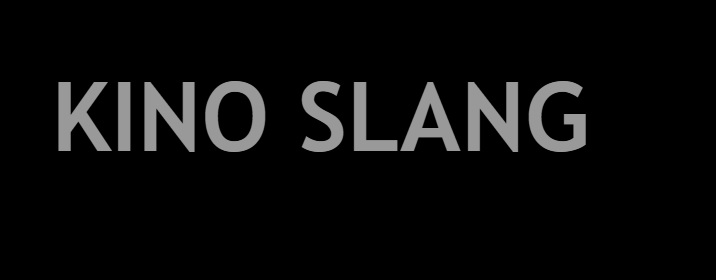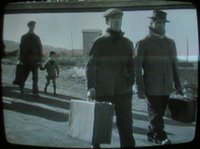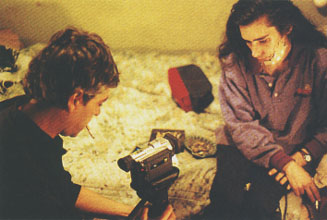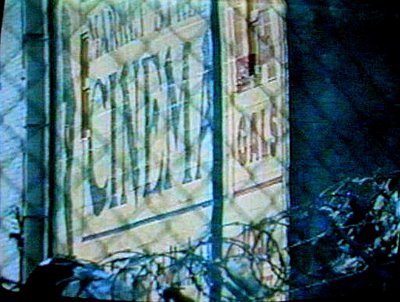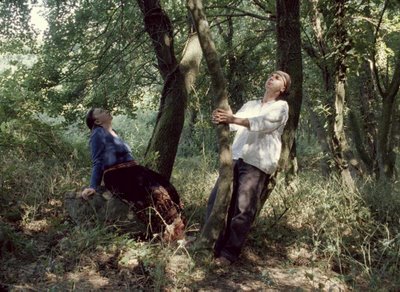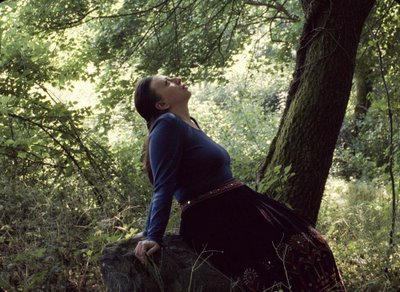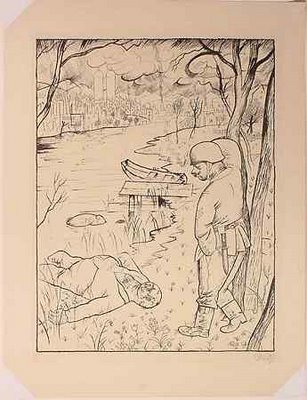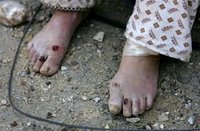August 30, 2006
August 28, 2006
"A Closed Door That Leaves Us Guessing" by Pedro Costa
August 23, 2006
August 18, 2006
Une visite au Louvre (2004, Straub/Huillet)
(dead link)
I know of one incident wherein an opportunist selling Straub/Huillet bootlegs on ebay received a hand-written letter from the Straubs telling him to STOP NOW (he instantly tried to sell the note!). I also know that the Straubs held their film CEZANNE back from being subtitled so as to preserve the integrity of the paintings. My posting of this clip goes against the Straubs presumed wishes on both these counts.
I don't quite understand the intention of posting the first 7 minutes of a film on youtube. And, as if to really test the idea's utility, the same man who posted the first 7 minutes of Une visite au Louvre has also posted the first 14 minutes of OUT-1 (759 minutes to go)! At 7 min intervals ("parts") that would be 109 "parts". Paul Gallagher, the good fellow who posted these, has well over 100 clips posted on Youtube, many worth checking out (Foucault conversation with Chomsky, Dans le noir de temps by Godard, etc).
I post it here because it brought me so much pleasure to see a bit of this film again. Perhaps it's because it reminds me of sitting in a packed house in Vienna to watch two sucessive versions of it in a row (I counted 3 differences between the 2 versions: 1) a variation in the pan across the Louvre exterior, 2) a variation on an overhead shot of the Seine later in the film, and 3) a minutely but distinctly varied voice-over intonation)...
Even in seven minutes I think you can see some of the eventfulness of a single Straub/Huillet shot. The pan across the Seine and Louvre exterior has the quality of an act; an action taken, not simply taken in. You can see the level of minutae on which the Straubs are working.
In any case, listen to Cezanne (the voice-over):
This film is Huillet/Straub's blast against a certain alienatation from art -- painting -- and from the spirit of nature and life that inspired the paintings (which the Museum isn't helping). And since every Straub film is about the class struggle in some way (even if by implying that that which gets in the way of lived nature must be done away with) it reminds me of an incident I once read about:
In 1920, a Kapp (fascist) putsch sparked riots in Dresden and while the people of Dresden were fighting to defend democracy a stray bullet hit a Rubens painting in the Zwinger museum. Oskar Kokoschka issued a public statement in which he suggested, in all seriousness, that the fighting be moved out onto the heath outside of town or even replaced by single combat between political leaders of opposing camps. George Grosz, Spartacist as he was at the time, said:
"(we're) delighted that bullets flew into galleries and palaces, into Rubens masterpieces, and not into the houses of the poor. Workers! Every time that the artist paints something that the bourgeois can cling to and that dazzles you with illusions of beauty and happiness, that artist is strengthening the bourgeoisie and sabotaging your class consciousness, your will to power."
I don't quite understand the intention of posting the first 7 minutes of a film on youtube. And, as if to really test the idea's utility, the same man who posted the first 7 minutes of Une visite au Louvre has also posted the first 14 minutes of OUT-1 (759 minutes to go)! At 7 min intervals ("parts") that would be 109 "parts". Paul Gallagher, the good fellow who posted these, has well over 100 clips posted on Youtube, many worth checking out (Foucault conversation with Chomsky, Dans le noir de temps by Godard, etc).
I post it here because it brought me so much pleasure to see a bit of this film again. Perhaps it's because it reminds me of sitting in a packed house in Vienna to watch two sucessive versions of it in a row (I counted 3 differences between the 2 versions: 1) a variation in the pan across the Louvre exterior, 2) a variation on an overhead shot of the Seine later in the film, and 3) a minutely but distinctly varied voice-over intonation)...
Even in seven minutes I think you can see some of the eventfulness of a single Straub/Huillet shot. The pan across the Seine and Louvre exterior has the quality of an act; an action taken, not simply taken in. You can see the level of minutae on which the Straubs are working.
In any case, listen to Cezanne (the voice-over):
"Look at that...the Victoire de Samothrace. She's an idea, she's a whole people, a heroic movement in the life of a people, yet the fabric clings to her legs, her wings flutter, her breasts swell. I don't need to see her head to imagine her look, because all the blood which beats, circulates, sings in her legs, her hips, throughout her body, has passed in torrents into my brain and has entered my heart. When the head is gone, so what, the marble has bled...While up there in the primitives, you can chop the necks of all those little martyrs with the executioner's sword and there's a little vermilion, a few drops of blood...They have already flown bloodless up to God. Souls can't be painted. And here, Victory's wings, you don't even see them, I don't see them anymore. We don't think about them anymore, the seem so natural. Her body doesn't need them to be able to fly away in full triumph. It has elan...Whereas the haloes of the virgins and saints surrounding Christ, one sees only them. They impose themselves on us. They embarrass me. What do you want? You can't paint souls. You paint bodies, and when bodies are well painted, then, damn it, the soul, if they have one, the soul radiates and shows through from everywhere.
(...) but I know nothing colder than his (David's) Marat! What a petty hero! A man who had been his friend, who had just been assasinated, whom he should have glorified for all of Paris, for all of France, for all posterity. Did he just toss that sheet over him and wash him off in his bathtub? He was thinking about what people would say about the painter and not what they would think about Marat. It's a bad painting. And he had the cadaver right in front of his eyes!".
This film is Huillet/Straub's blast against a certain alienatation from art -- painting -- and from the spirit of nature and life that inspired the paintings (which the Museum isn't helping). And since every Straub film is about the class struggle in some way (even if by implying that that which gets in the way of lived nature must be done away with) it reminds me of an incident I once read about:
In 1920, a Kapp (fascist) putsch sparked riots in Dresden and while the people of Dresden were fighting to defend democracy a stray bullet hit a Rubens painting in the Zwinger museum. Oskar Kokoschka issued a public statement in which he suggested, in all seriousness, that the fighting be moved out onto the heath outside of town or even replaced by single combat between political leaders of opposing camps. George Grosz, Spartacist as he was at the time, said:
"(we're) delighted that bullets flew into galleries and palaces, into Rubens masterpieces, and not into the houses of the poor. Workers! Every time that the artist paints something that the bourgeois can cling to and that dazzles you with illusions of beauty and happiness, that artist is strengthening the bourgeoisie and sabotaging your class consciousness, your will to power."
Everything must be kept in mind.
August 13, 2006
August 10, 2006

Shocked by the arrogance and brutality of the current US-backed Israeli assault on Lebanon, myself and Gabe Klinger have hammered out a screening of two films by Lebanese filmmakers whose work is of great interest. This Chicago screening is in solidarity with the Lebanese civilian population and all proceeds will go to medical and political organizations in need.
Wael Nourredine's film CA SERA BEAU (FROM BEYROUTH WITH LOVE, 2005) is part of the program and paints a complex, radically discordant view of Hariri's Beirut. What some call a brief period of peace after 30 years of civil war was completely shattered in July by massive Israeli strikes. But Wael's film is anything but sanguine about this period. This Beirut is the one fatigued by war's memory,with constant military presence, Starbucks, surveillance, drug-use, apathy, suicide, rage, picture postcards and religion. The film opens with the still burning wreckage of a car-bomb that killed the western-friendly Hariri and reflects the dissatisfaction of a society at war with intruding interests.
Here is the press release for the screening:
RECENT FILM AND VIDEO WORKS FROM LEBANON: A screening to benefit Lebanese civilians in need of food, shelter and medical supplies.
The program will consist of:
"Ça cera beau. From Beirut with Love" by Waël Noureddine (30', 2005, Lebanon/France) U.S. Premiere. Mutilated, the city of Beirut shows its wounds from years of war. The architecture, along with the many bullet-holed walls and ruined buildings, affects the psychological health of its inhabitants. The strong military presence only adds to this void, which leaves young people to choose between drugs, the army, or religion. + a video interview with Noureddine (3')
"Untitled Part 3b: (As If) Beauty Never Ends" by Jayce Salloum (11'22, 2003, Lebanon/Canada) Beauty persists even in the most desperate conditions: this video essay superimposes images of orchids in bloom over refugee camp conditions after the Sabra and Shatilla massacre in 1982. + a video introduction by/with Salloum (3')
The entire program will run approximately one hour. Suggested admission: $5.00.
Two screening dates:
FRIDAY, AUGUST 18 at 7:30 PM
SATURDAY, AUGUST 19 at 4:00 PM
Location: Columbia College Ludington Building 1104 South Wabash Avenue Third Floor Auditorium (Room 302)
Proceeds go directly to the Lebanese Red Cross, Hamoud Hospital in South Lebanon, and Samidoun Coalition, which runs the Sanayeh Relief Center in Beirut (see websites below).
For more information, contact Gabe Klinger at gabe.klinger@sbcglobal.net or kinoslang@hotmail.com
Thank you for your support.-- For details about the beneficiaries, please consult the websites of these organizations:
Hamoud Hospital: http://www.hammoudhospital.com/war2006/relief.html
Lebanese Red Cross: http://www.dm.net.lb/redcross/index.html http://www.icrc.org/web/eng/siteeng0.nsf/iwpList2/Help_the_ICRC?
OpenDocument Samidoun: http://www.samidoun.org
August 7, 2006
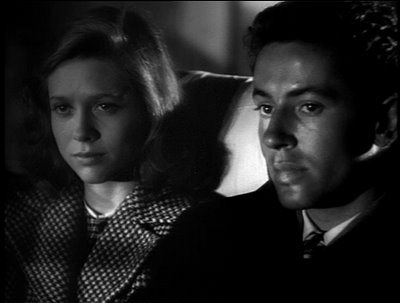
"Today, were he still among us, would have been the 95th birthday of American Cinema's true poet of human failing, Nicholas Ray. We here at If Charlie Parker Was a Gunslinger would like all of our visitors to mark the occasion by carving out a few errant moments to reflect on a period when this neck of the medium was able to demonstrate a degree of compassion for our panoply of weakness, and not, as they do in this hour, simply cash in on it with bottomless contempt."
(Tom Sutpen)
Thinking of Ray today brings a lump to my throat. When people cry on television all you see is the fangs of the camera and their competitors. But when Farley Granger leaves Cathy O'Donnell's arms for one last heist, and when Cathy O'Donnell looks up from Granger's corpse surrounded by cops (the cameras today would be trained on the cops) you don't see fangs, you see frail human souls. Even when there's blood, like in the bathtub of PARTY GIRL, or on the igloo wall of SAVAGE INNOCENTS, there is gravity and grace, there is thought; there were hearts that pumped that blood through those bodies, and we immediately think of that -- not the pseudo-scientific hustlers swarming the scene (CSI).
He filmed storms, always human, plus: fine sand, dust, snow, humidity and swamps, brisk asphalt cities, tired domestic air, architecture, culture, fabrics, hypocrisy, rock 'n roll...
And who else inserted a shot of a bird struggling human ways like he? Who cared to?
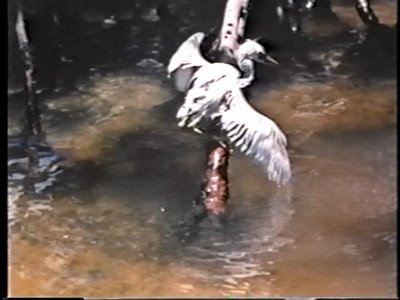
August 5, 2006
THE TROUBLEMAKERS
by Gilles Deleuze
Why would the Palestinians be “valid negotiators” since they don’t have a country? Why would they have a country, since theirs has been taken? They have never been given any other choice than to surrender unconditionally. They have been offered only death. In the war that opposes them to Israel, Israel’s actions are considered legitimate reprisals (even if they appear disproportionate), while those of the Palestinians are treated exclusively as terrorist crimes. And an Arab death has neither the same value nor the same weight as an Israeli death.
Since 1969 Israel has continuously bombed and shelled South Lebanon. Israel explicitly recognized that the recent invasion of that country was not a reprisal for the Tel Aviv commando action (thirty thousand soldiers against eleven terrorists), but the premeditated, crowning moment of a whole series of operations whose initiative Israel reserved to itself. For a “final solution” to the Palestinian problem, Israel can count on the almost unanimous complicity of other states, with a variety of nuances and restrictions. The Palestinians, people with neither land nor state, are seen as obstacles by everyone. No matter how many weapons and how much money they have received from certain countries, they know what they’re saying when they declare that they are absolutely alone.
The Palestinian combatants also say that they have just won a certain victory. They had left only resistance groups in South Lebanon, groups which seem to have held up quite well. On the other hand, the Israeli invasion struck blindly at Palestinian refugees, Lebanese peasants, all the poor agricultural people. The destruction of villages and cities, massacres of civilians have been confirmed; the use of cluster bombs [bombes à billes] has been reported in several quarters. For several years this South Lebanese populace has been continuously fleeing and returning, in perpetual exodus, under Israeli blows that cannot very clearly be distinguished from terrorist acts. The current escalation has driven two hundred thousand people onto the roads without shelter. The state of Israel is applying to South Lebanon the method that proved itself in Galilee and elsewhere in 1948: it is “palestining” South Lebanon.
The Palestinian combatants are drawn from the refugees. Israel claims to defeat the combatants only by turning thousand of others into refugees, among whom new combatants will be born.
It’s not only our relations with Lebanon that make us say that the state of Israel is murdering a fragile and complex country. There is also another aspect. The Israel-Palestine model is determinant in current problems of terrorism, even in Europe. The worldwide understanding among states and the organization of a world police force with worldwide jurisdiction, currently under way, necessarily lead to an expansion in which more and more people are classified as virtual “terrorists.” We find ourselves in a situation analogous to that of the Spanish Civil War, when Spain served as the laboratory and experimentation for a still more terrible future.
Today, the state of Israel leads the experimentation. It is establishing a model of repression that will be converted in other countries, adapted by other countries. There is a great deal of continuity in its politics. Israel has always considered that the UN resolutions which verbally condemned it in fact proved it right. It transformed the invitation to withdraw from the occupied territories into the duty to establish colonies there. Currently it considers the deployment of the international force in South Lebanon an excellent idea…on the condition that this force is ordered to transform the region into a surveillance zone or a controlled desert. It’s an odd kind of blackmail, which the whole world will give up only if there is sufficient pressure to ensure that the Palestinians are finally recognized for what they are, “valid negotiators,” since they are in a state of war for which they are most certainly not responsible.
Translated by Timothy S. Murphy
(originally published in Le Monde, April 7, 1978)
Why would the Palestinians be “valid negotiators” since they don’t have a country? Why would they have a country, since theirs has been taken? They have never been given any other choice than to surrender unconditionally. They have been offered only death. In the war that opposes them to Israel, Israel’s actions are considered legitimate reprisals (even if they appear disproportionate), while those of the Palestinians are treated exclusively as terrorist crimes. And an Arab death has neither the same value nor the same weight as an Israeli death.
Since 1969 Israel has continuously bombed and shelled South Lebanon. Israel explicitly recognized that the recent invasion of that country was not a reprisal for the Tel Aviv commando action (thirty thousand soldiers against eleven terrorists), but the premeditated, crowning moment of a whole series of operations whose initiative Israel reserved to itself. For a “final solution” to the Palestinian problem, Israel can count on the almost unanimous complicity of other states, with a variety of nuances and restrictions. The Palestinians, people with neither land nor state, are seen as obstacles by everyone. No matter how many weapons and how much money they have received from certain countries, they know what they’re saying when they declare that they are absolutely alone.
The Palestinian combatants also say that they have just won a certain victory. They had left only resistance groups in South Lebanon, groups which seem to have held up quite well. On the other hand, the Israeli invasion struck blindly at Palestinian refugees, Lebanese peasants, all the poor agricultural people. The destruction of villages and cities, massacres of civilians have been confirmed; the use of cluster bombs [bombes à billes] has been reported in several quarters. For several years this South Lebanese populace has been continuously fleeing and returning, in perpetual exodus, under Israeli blows that cannot very clearly be distinguished from terrorist acts. The current escalation has driven two hundred thousand people onto the roads without shelter. The state of Israel is applying to South Lebanon the method that proved itself in Galilee and elsewhere in 1948: it is “palestining” South Lebanon.
The Palestinian combatants are drawn from the refugees. Israel claims to defeat the combatants only by turning thousand of others into refugees, among whom new combatants will be born.
It’s not only our relations with Lebanon that make us say that the state of Israel is murdering a fragile and complex country. There is also another aspect. The Israel-Palestine model is determinant in current problems of terrorism, even in Europe. The worldwide understanding among states and the organization of a world police force with worldwide jurisdiction, currently under way, necessarily lead to an expansion in which more and more people are classified as virtual “terrorists.” We find ourselves in a situation analogous to that of the Spanish Civil War, when Spain served as the laboratory and experimentation for a still more terrible future.
Today, the state of Israel leads the experimentation. It is establishing a model of repression that will be converted in other countries, adapted by other countries. There is a great deal of continuity in its politics. Israel has always considered that the UN resolutions which verbally condemned it in fact proved it right. It transformed the invitation to withdraw from the occupied territories into the duty to establish colonies there. Currently it considers the deployment of the international force in South Lebanon an excellent idea…on the condition that this force is ordered to transform the region into a surveillance zone or a controlled desert. It’s an odd kind of blackmail, which the whole world will give up only if there is sufficient pressure to ensure that the Palestinians are finally recognized for what they are, “valid negotiators,” since they are in a state of war for which they are most certainly not responsible.
Translated by Timothy S. Murphy
(originally published in Le Monde, April 7, 1978)
Subscribe to:
Posts (Atom)
Archive
- October 2005 (1)
- November 2005 (6)
- December 2005 (6)
- January 2006 (1)
- February 2006 (9)
- March 2006 (2)
- April 2006 (3)
- May 2006 (2)
- June 2006 (3)
- July 2006 (14)
- August 2006 (11)
- September 2006 (5)
- October 2006 (9)
- November 2006 (3)
- December 2006 (5)
- January 2007 (6)
- February 2007 (7)
- March 2007 (6)
- April 2007 (3)
- May 2007 (1)
- June 2007 (7)
- July 2007 (2)
- August 2007 (3)
- October 2007 (4)
- November 2007 (5)
- December 2007 (3)
- January 2008 (2)
- February 2008 (2)
- March 2008 (4)
- May 2008 (3)
- June 2008 (2)
- July 2008 (3)
- August 2008 (3)
- September 2008 (4)
- October 2008 (3)
- November 2008 (1)
- December 2008 (3)
- January 2009 (3)
- March 2009 (5)
- April 2009 (3)
- May 2009 (11)
- June 2009 (6)
- July 2009 (2)
- August 2009 (6)
- September 2009 (2)
- December 2009 (1)
- January 2010 (2)
- February 2010 (1)
- March 2010 (2)
- April 2010 (10)
- May 2010 (4)
- June 2010 (1)
- July 2010 (1)
- August 2010 (1)
- September 2010 (2)
- October 2010 (1)
- November 2010 (4)
- December 2010 (3)
- January 2011 (2)
- February 2011 (5)
- March 2011 (6)
- April 2011 (3)
- May 2011 (3)
- June 2011 (5)
- July 2011 (2)
- September 2011 (1)
- October 2011 (3)
- November 2011 (3)
- December 2011 (1)
- January 2012 (2)
- February 2012 (7)
- March 2012 (10)
- April 2012 (7)
- May 2012 (11)
- June 2012 (3)
- July 2012 (3)
- August 2012 (2)
- September 2012 (1)
- October 2012 (9)
- November 2012 (10)
- December 2012 (6)
- January 2013 (3)
- February 2013 (4)
- March 2013 (4)
- April 2013 (4)
- May 2013 (3)
- June 2013 (4)
- July 2013 (4)
- August 2013 (2)
- September 2013 (7)
- October 2013 (6)
- November 2013 (2)
- December 2013 (4)
- January 2014 (4)
- February 2014 (6)
- March 2014 (7)
- April 2014 (5)
- May 2014 (4)
- June 2014 (6)
- July 2014 (2)
- August 2014 (5)
- September 2014 (1)
- October 2014 (1)
- January 2015 (1)
- April 2015 (1)
- July 2015 (1)
- September 2015 (2)
- October 2015 (1)
- December 2015 (1)
- January 2016 (1)
- February 2016 (2)
- March 2016 (1)
- April 2016 (1)
- May 2016 (2)
- June 2016 (1)
- July 2016 (3)
- August 2016 (1)
- September 2016 (2)
- October 2016 (2)
- December 2016 (3)
- January 2017 (1)
- February 2017 (2)
- May 2017 (3)
- July 2017 (3)
- October 2017 (3)
- November 2017 (1)
- December 2017 (1)
- January 2018 (2)
- February 2018 (2)
- March 2018 (4)
- April 2018 (1)
- May 2018 (3)
- July 2018 (1)
- August 2018 (1)
- January 2019 (1)
- March 2019 (3)
- May 2019 (3)
- July 2019 (1)
- August 2019 (2)
- September 2019 (2)
- October 2019 (1)
- November 2019 (2)
- December 2019 (1)
- January 2020 (3)
- February 2020 (2)
- April 2020 (4)
- May 2020 (1)
- October 2020 (1)
- December 2020 (1)
- March 2021 (1)
- April 2021 (1)
- May 2021 (1)
- October 2021 (1)
- January 2022 (2)
- March 2022 (1)
- April 2022 (2)
- May 2022 (3)
- May 2023 (1)
- October 2023 (3)
- January 2024 (1)
